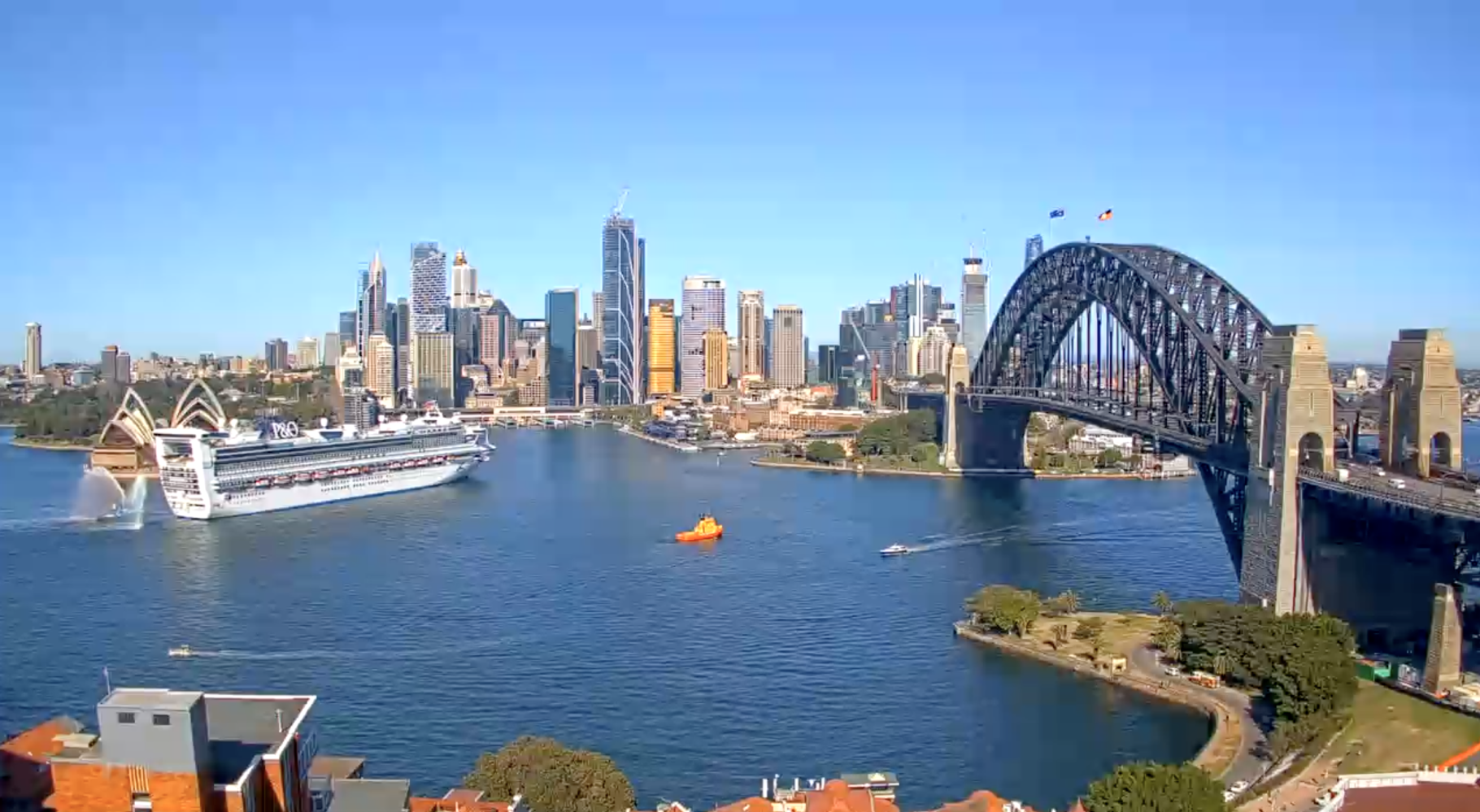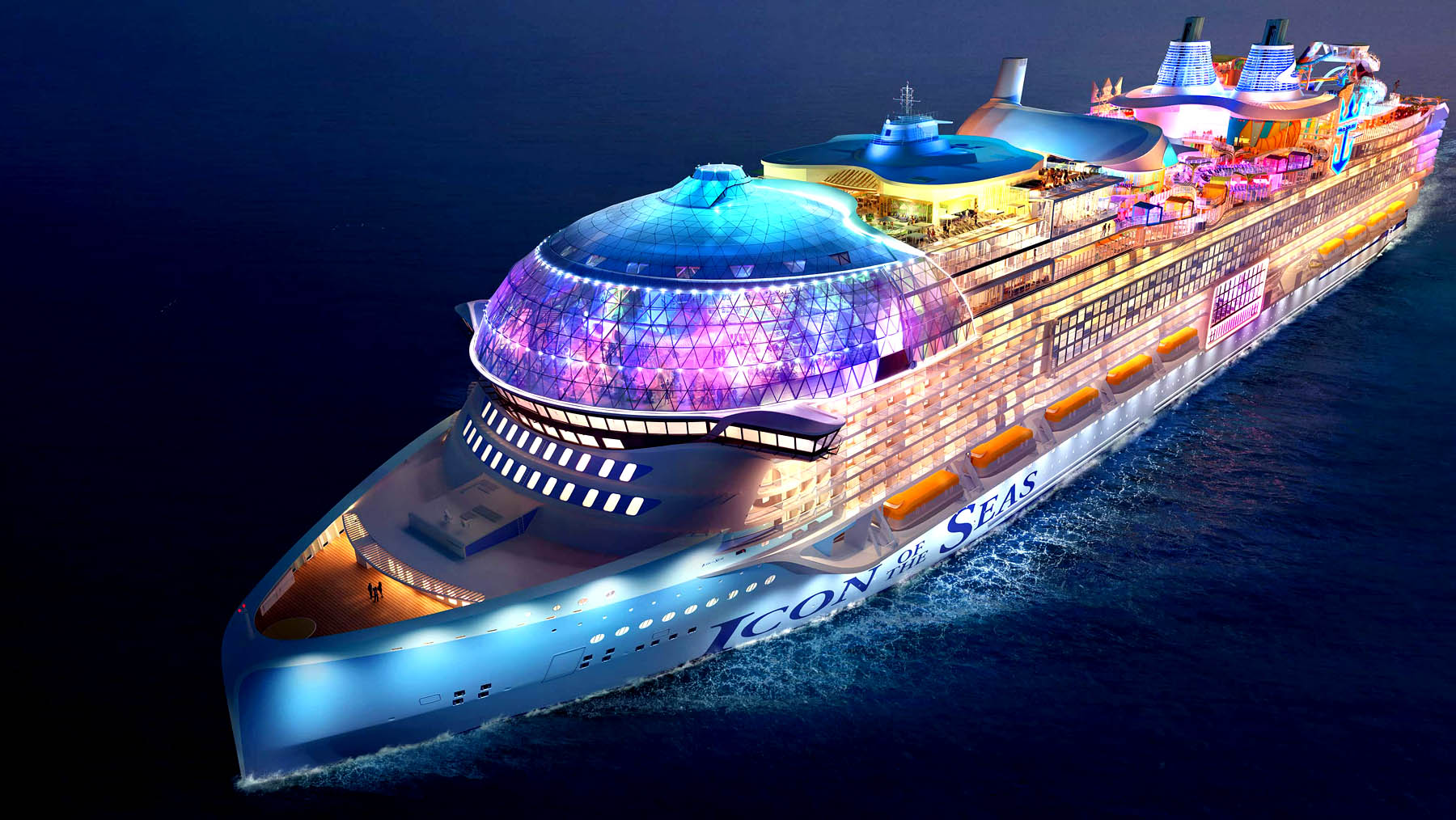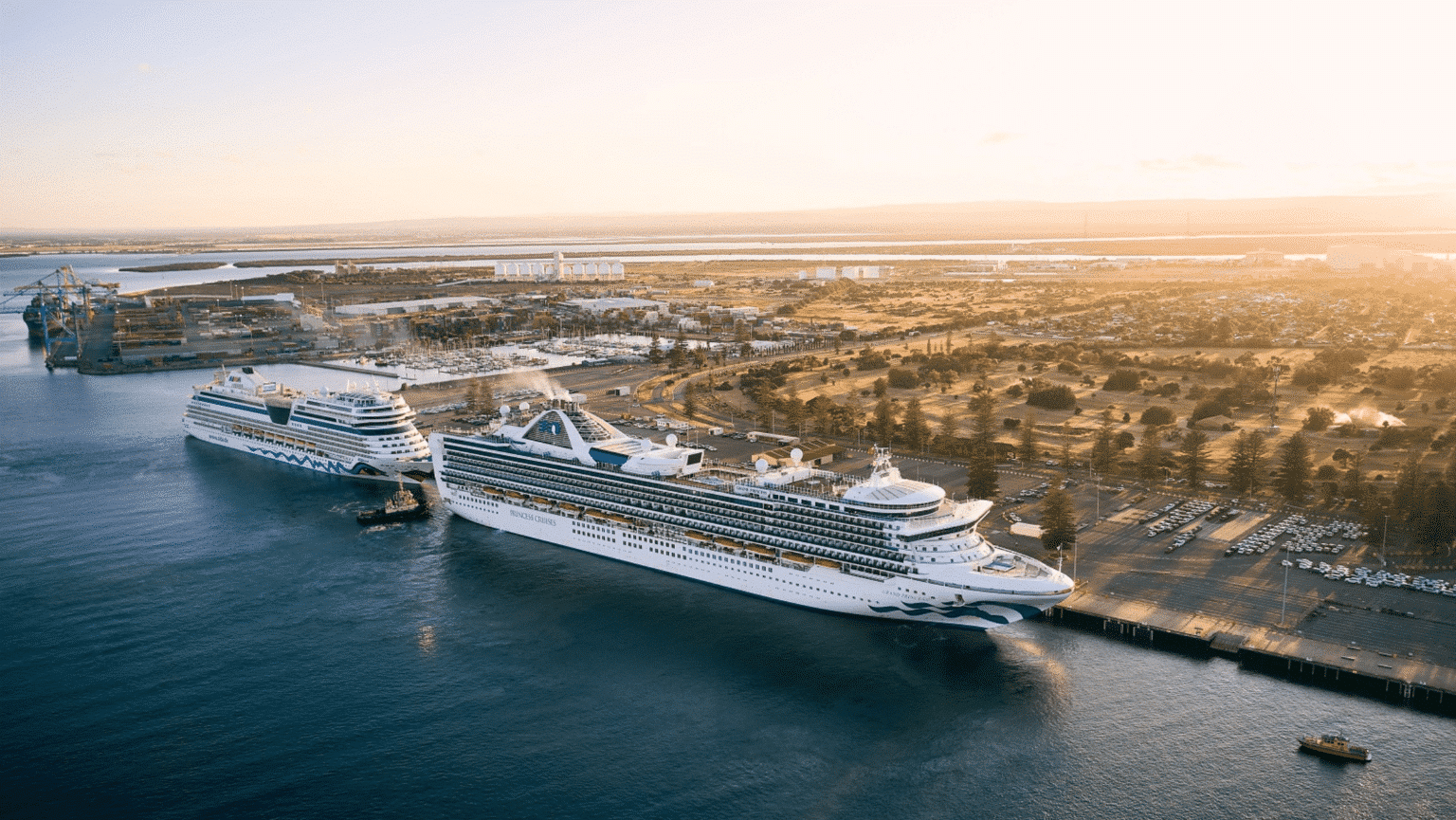In just a few weeks, leaders of Australia’s cruise industry will meet at the 26th Australian Cruise Association Conference. Ironically, the conference will be held in Adelaide.
The South Australia capital was once a centre of cruise growth. But soon it won’t have any homeported ships. There will be visits – but South Australians will mostly need to leave their state to catch a cruise.
According to the South Australian Tourist Commission, cruise was the fastest growing sector in the state. In 2022-23, 103 cruise and expedition ships visited South Australia, welcoming 227,900 passengers and crew. The economic impact of cruise grew 48% since 2018-19 to $215M.
Once Princess Cruises homeported vessels there. There was even a world cruise which left from the South Australian capital.
Now the city is one of the victims of the extraordinary decline in our home-grown cruise industry. While demand for cruising is surging, with new-to-cruise passengers at an all time high, the number of vessels sailing our waters has sunk.
Cruise industry is in decline as demand surges
Carnival, the world’s largest cruise operators, is closing P&O Australia, the iconic brand with a 92 year history. Instead, its ships will be branded Carnival – so they can be sailed here – anywhere else in the world under common branding.

The Australian Cruise Association conference will be themed “Steering Ideas to Success.” There certainly needs to be some fresh thinking.
Once Australia had the world’s highest penetration per capita. But by 2026, our capacity will be cut by 30 per cent thanks to two critical problems: high port prices and over-regulation.
“As we look towards the next phase of the exciting and ever-changing cruise market in our region, we need to be open to ideas that continue to advance cruise as a sustainable and vital pillar of Australia’s visitor economy,” says Jill Abel, CEO of the Australian Cruise Association in a document spruiking her conference.
“This year’s conference sessions will be all about inviting robust discussion and sharing of ideas with our membership and cruise community, that will ultimately steer us toward continuing success.”
“Robust discussion” is exactly what is needed. And the agenda is spot on: ongoing governance and regulatory issues; a focus on destination development.
Our problem is not just homegrown. Our low dollar and a huge surge in interest in America, the problems of repositioning huge vessels while the Middle East is a war zone, are all contributors.
Why is Australia’s cruise industry in decline?

The world’s largest cruise ship, Royal Caribbean’s Icon of the Seas, is running at 104% capacity with record high care and on board spend in the Caribbean, a region that truly embraces cruise passengers. The US is recording an enormous rise in cruising.
On top of that, for some lines, Aussies represent the highest spending passengers in places like the Mediterranean. So selling fly-cruise is a lucrative option.
So why would you want to send your ships to a region where regulation introduces uncertainty and fees are among the world’s most expensive, and where fares are relatively cheap?
Let’s hope the leaders of our industry grasp the challenge of convincing federal and state governments that they need to welcome cruise not set out laws that make it more difficult to operate. They need to convince the US companies that own the ships that Australia is a strong and viable cruise market.
The challenges the cruise industry needs to overcome
Here are some of the challenges which have transformed the Australian cruise industry from the darling of Miami to an also-ran:
- Our port charges are among the highest in the world, yet our state-owned ports won’t even acknowledge the problem. Despite a Cruise Passenger survey charting the decline in capacity, ports like Melbourne and Hobart have raised their charges, oblivious to the decline it’s producing.
- Exemption from regulations like the Coastal Trading Act – without it, some cruise lines would face enormous cost increases. An exemption has been granted on an annual basis, meaning the future of foreign cruise companies looks uncertain
- In New Zealand, some fees have risen 88% while the government is contemplating a Milford Sound cruise ban. The biosecurity regulations have wreaked havoc on cruise holidays for two years, leaving cruise companies facing compensation claims.
- A lack of port development has meant that many cruisers have told us they’ve “Been there, done that. We need to invest in more varied itineraries and destination development.
While all of this sounds dire, we at Cruise Passenger are genuinely optimistic. There is so much to celebrate. But governments – both State and Federal – need to stop taking the cruise industry for granted and roll out the welcome mat.
It took years for Tourism Australia and bodies like Destination New South Wales to acknowledge the boom on their doorsteps that grew out of the work of travel agents and bodies like Cruise Lines International Association Australasia.
The cruise industry has much to look forward to
There is, however, much to look forward to.

Royal Caribbean, for instance, is working with Vanuatu to create a private island at Lelepa which would revolutionise cruising out of Brisbane and could mean a ship would be based there year-round.
That would be a huge boon for the Queensland market – and stimulate the local fly-cruise market out of Sydney, Melbourne, and even Asia.
But the challenge is clear: as we reported several weeks ago, thousands of suites and cabins will be cut from the market in the next 24 months, probably leading to job losses at ports and among tourism operators. Price rises of up to 30% on homeported cruises are almost inevitable.
Ports like Melbourne, part Chinese owned, and which tried to raise its berthing charges by 15% last year, as well as Adelaide will be big losers as cruise lines pull out of Australia, a move that will hit regional tourism. New Zealand too will find its economy hit.
Carnival’s CEO Christine Duffy, who flew in from Miami to make the announcement that P&O Australia would be “sunsetted”, told Cruise Passenger over-regulation and the fact that Australia is now one of the most expensive places to operate a cruise ship where to blame.
Peter Little, chair of Cruise Lines International Association, said Carnival had been trying to persuade governments to help with port and regulation.
“In this region, you have ports who are putting their prices up in double digits or even in triple digits, and that that’s not sustainable, to continue to be lifting the prices and the price of doing business in the region. So naturally we have to look at the economics of operating here so that companies are looking at the economics now.
“Many of the operators in this region are just saying there are headwinds that need to be addressed if we’re to continue to see growth in this region. But it’s not sustainable at the moment.”
He added: “We’ve been talking to governments in Victoria and governments in New Zealand as well.”
Cruise Lines International Association Australasia MD Joel Katz told Cruise Passenger: “I think from a demand perspective, we don’t see the demand slowing. We know that demand is increasing.
“We’re still expecting that the demand will increase and we’re predicting that the source market numbers will remain as they are.
“But as we see local capacity tighten and the supply tighten, a lot of that may need to convert into fly cruise.
“We’re expecting the numbers to be probably flat this coming season, and we’re going to see a contraction in the supply in the market.
“It’s something that we’ve been monitoring and we’ve been warning the government about because, as you know, the pressures on the cruise lines to deliver their yields and to be competitive in the international environment means they need consistency and competitiveness in costs,
“But they also need a regulatory environment that gives them the comfort that they can operate in Australia or in our region without ongoing uncertainty.”
He added: “The sad part about this whole situation is that we’re working so hard with the regional ports and the destinations to develop those partnerships, develop the collaboration so that they can grow their cruise visitation, and there are ports around Australia that actually rely on that.
“Thrive 2030, the government’s plan to grow tourism specifically talks about growing cruise in in regional ports and growing visitation. At the same time, you know, government policy doesn’t support that.”









Sure right about Brisbane. No travellator, so need wheelchair for that long distance!.
Terrible road to Terminal next door to sewerage outlet. Look at sprinklers puffing perfume on ship days! Had to get off and recheckin last week, after trip to Cairns, just to get a new keycard! Even wanted our bags off and put on again. Only been to Cairns, so some poor man had to push me over a kilometre from ship and back again, because I’m in 80s and would take an hour to walk it, with rests on very few seats! Possible collapse, it’s so far. What did they think I had to clear from Customs? Other lines can give you next cruise update on keycard on board. Were in same cabin!
Just hopeless.
We have been avid cruisers for 20 years. We have only cruised once this year. There are just too many tourists everywhere cruise ships are able to port. The infrastructure costs to improve existing or to build new port facilities are now unjustifiable. With all the add-ons, cruising is no longer the cost effective holiday it once was and the increase in the size of most ships has reduced port options even further. With Australia’s near neighbours increasing barriers to entry for cruise lines, it is little wonder that cabin offerings are on the decline in our market. There will be no simple fixes for this.
I am booked on a HAL cruise from Auckland down the east coast, then in the fjord park and then onto Tasmania, Melbourne and Sydney, prior to visiting various Pacific Islands, Hawaii and then to Seattle.
After booking, I found out that as a Canadian, I would be required to pay for visas to both New Zealand and Australia. Those each worked out to not much less than $200 Canadian. I find this to be money grabs, since Canada doesn’t require or charge for New Zealanders and Ozzies to visit Canada. Talk about a ripoff! Well, I guess, less money to spend in the ports we visit.
New Zealand and Australia need to wake up to the fact that cruise ships bring in a lot of external money. And then there is the fact that the Ozzie’s visa application was 19 pages long, and intrusive.
It doesn’t help that the cruise lines operating out of Australia just keep sailing to the same old routes/destinations. There’s only so many times you cab sail to the Pacific islands and Queensland before you get sick of them, as nice as they are.
The Australian goverment.They need to take a hard look at themselves. Every thing is owned by China.
Sydney Ports spokesman said the other day that their huge port charges were justified by being one of the best ports in the world. That is a fine example of the blinkered views that exist amongst individual authorities and their lack of understanding of the whole picture. Fly cruises to Asia are a great alternative for the cruise lines.
I am really disappointed that there is no cruise to Norfolk Island from Brisbane. I was really looking forward to doing that cruise.
We build new ports to accommodate more ships and then work on higher prices which force ships to look elsewhere. Australians see all what is happening overseas and then follow the Rabbit down the hole. We seem to work on the principle of getting
the maximum of profit out without any consideration for its future.
We build nothing and are very lucky to be able to dig or drill something out of this lucky country’s ground.
I support you guys all the way KEEP PORT FEES DOWN
the new terminal in Brisbane is not a patch on the wharf at Hamilton where there is a shopping precinct and accommodation, easy access to several long-term parking and a boardwalk to the city, what do you have at the new cruise terminal, a shed with a long walk, no travelator for the slower walkers, and a cafe that is too small to handle those boarding the ship let alone visitors seeing their friends off.